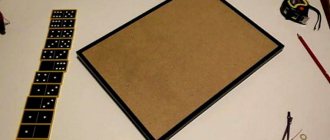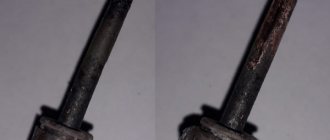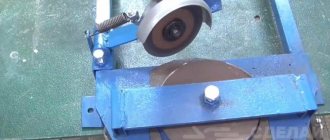This was my first project. In 2015, I had a wild desire to do something unusual, futuristic.
I won’t describe all the options that came to my mind at the time. I settled on a cybernetic hand. At that time there were not many such projects. But I liked the project of one French artist Gael Langevin. He offers everyone the files to print a robot on a 3D printer.
How to make an advanced robotic arm
Good afternoon, brain engineers ! This brain guide will tell you how to create a high-quality robotic arm with your own hands , and at low cost.
This “open source” brain product is superior to similar robotic arms not only in assembly price, but also in performance, and is not inferior even to industrial ones. And if you use bioelectric control in it, then it quite easily captures various objects, such as an electric screwdriver, a cap or a battery.
Step 1: Compare the performance of analogues
As already mentioned, this homemade product is not inferior to industrial analogues, and this was achieved by careful selection of components. The first table presented shows a comparison of the characteristics of the motor that is used in commercial robotic arms and the one I selected.
Knowing the performance of engines from industrial analogues, I selected an engine that was suitable in terms of power, but cheaper, that is, the compression force of the fingers of my robotic hand is the same as that of industrial ones. But as shown in the second table, the finger speed of my brain machine is faster than its commercial counterparts, which makes it easier to grasp objects and improves productivity. The third table shows the size and weight of the components of the robotic arm and analogues, and based on them it can be seen that the use of 3D components lightens the overall weight of the craft .
Compared to OpS (open source) analogs, the grip strength of this robotic hand is 2.5 times greater, the weight is 20% less, and the palm is about half thinner. That is, in terms of characteristics, this homemade product has advantages for the user. In addition, the fingers of the robotic hand act more consistently, the joints bend proportionally and reliably every time, which ensures stable and productive functioning of the craft. The design of many OpS analogues is simple - the “tendon” simply passes inside the finger and is pulled together like a winch, which leads to awkward, sudden movements of the hand and inconsistency of the joints.
And yet, despite the described advantages, this robotic craft also has disadvantages. Thus, 3D printed components are more susceptible to mechanical damage compared to metal components of their analogues, that is, they are easier to break, but at the same time easier to repair. This robotic hand also lacks a locking mechanism, meaning that force must be constantly applied to maintain the grip, which reduces energy efficiency.
Step 2: Components
The design of this robotic arm was developed based on publicly available and 3D-printed components, the entire list of which, as well as places of purchase, are presented in the tables on Brain Photo . I'm not providing specific links due to frequent changes in suppliers, but if a component is unavailable, don't be afraid to replace it with a similar one!
I printed my 3D components with a resolution of 0.2mm and 10% infill, which ensures fairly fast printing (about 14 hours) with the required strength of the resulting parts. I also advise you to print the parts for this robotic craft at the maximum resolution and fill values of your printer.
Step 3: Finger Assembly
All fingers, including the thumb, are assembled in the same way, and this process is shown in detail in the photo, and in even more detail in the instructions.
We tie a knot at one end of the metal cable and fasten it with a drop of super glue, then pass the cable through the hole in the reel until the knot stops. We pass it so that the knot is on top of the coil, and the free end comes out of the bottom hole.
We take the engine and string a coil onto its shaft, stringing it so that the plane of the coil fits tightly to the plane of the shaft, otherwise there is a risk of damaging it.
Insert two 6mm M2 screws into the motor housing element into small holes, carefully install this element onto the motor, find the desired position of the coil/motor and secure it with the screws.
We assemble the elements of the fingertip and the ligament; for fastening we use M2 screws and nuts. At the same time, we do not fasten it tightly, leaving a sufficient degree of freedom for the joints.
We pass a ligament through the middle phalanx and connect it to the upper part of the finger, using the photo as a guide, and then fastening both parts of the finger with 20mm M2 screws.
Next, we connect the ligament to the corresponding hole in the engine housing and secure it with a 12mm M2 screw; for this you will need to bend the finger completely.
We connect the pin to the motor housing and fasten it through the hole in the lower part with a 20mm M2 screw.
We pass the free end of the cable inside the engine housing and through the hole in the bottom of the finger, tie a knot, secure it with a drop of super glue and cut off the excess end of the cable with wire cutters.
We repeat all the steps with the remaining fingers, including the thumb, which, although it has some differences in details, is assembled in the same way. When all the fingers are assembled, we proceed to the palm: we take a plate with 4 holes, this is the back part, and attach the assembled fingers to it with 6mm M2 screws. After this, install the front plate and secure it in two places to the outer fingers with 6mm M2 screws.
Step 4: Servo
Let's start the final brain assembly . We take the servo drive and insert it into the caliper printed for it, which should fit tightly to the servo drive.
We mount a bracket on the thumb that will engage it with the servo drive and secure it with a 6mm M2 screw.
We connect the thumb bracket to the servo and secure it with screws, after that we attach the entire thumb/servo structure to the front hand plate and fasten it in the appropriate places with 6mm M2 screws.
Mechanical assembly complete!
Step 5: Management
Typically, modern prosthetics are controlled by a bioelectrical controller that reads small muscle tensions called electromyographic (EMG) signals. By analyzing these signals, the controller understands which muscles are involved and, therefore, what position the prosthesis should take. This process requires a complex 8-channel EMG chip and a software learning algorithm called linear discriminant analysis. But this is a question of more advanced and responsible use of homemade products , which requires greater knowledge in electronics and programming, but now let’s do it simpler.
The second method is suitable for people involved in computer technology. The idea is to create a PID controller or push-button control to move the hand to different positions.
That's all, I hope it was useful. Good luck with your brainwork !
(Especially for MozgoChins#Tact-Low-cost-Advanced-Prosthetic-Hand
Source
Website about DIY inventions
Robot control electronics
To simplify the assembly of the electronic part as much as possible, a control circuit was developed based on Arduino Leonardo (i.e. as a screen compatible with the Uno R3). The board is equipped with an ATmega32U4 AVR microcontroller with built-in USB. This allows you to create a fully USB-compatible device without the need to solder additional components for installation.
Since I wanted to supply 6V to the servos (to get maximum torque), the custom shield simply supplies Vin to the servos. The LDO regulator on the Arduino ensures that the rest of the circuit receives a constant 5V. The problem with DIY servos (especially high torque servos) is that under load the current draw can be quite high. Tests show a maximum consumption of about 400 mA per servo. When you factor in the small power headroom (i.e. 500mA per servo) and the fact that we have 6 servos, the power supply needs to be over 3A to do the job. Here we used a regulated power supply that can supply 5A at voltage 6 Volts, which is more than enough for the manipulator to operate. This power supply is directly connected to the Arduino power connector.
Since the servos are directly connected to Vin on the Arduino, you should not use a power supply rated for voltages higher than 6 volts. This will damage the servo!
To make the project as universal as possible, I placed 7 servo output connectors on the board (one for each Arduino PWM output). that is, you can use the board for any project that requires 1 to 7 servos. Additionally, a single LED has been added for status indication and a JTAG header (this allows for more flexible programming and debugging of the firmware if you have a JTAG programmer).
Awesome way to make DIY mechanical monster arms
Hi all. Halloween costumes come in all shapes and sizes. For example, the Iron Man or Batman suit is worn by ordinary guys who walk along the same street with us











